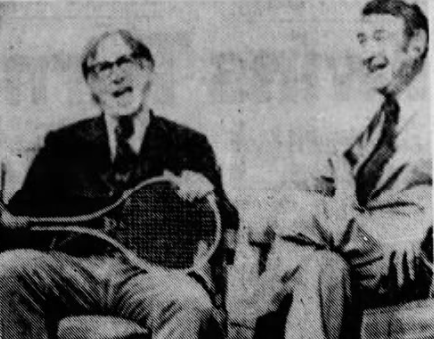The Astrodome was booked, the one-liners were scripted. All that was left was to play the match… and count the money.
On August 2nd, 1973, promoter Jerry Perenchio struck a deal with the American Broadcasting Company–ABC–to show the Battle of the Sexes in a two-hour prime-time slot. While no one was ready to admit the exact price, reports settled on a number around $700,000. The other major networks had dropped out at $400,000 and $500,000, respectively.
Early signs suggested that ABC didn’t overbid. By press time for the next morning’s newspapers, ABC chief Roone Arledge was able to say that he had sold all 15 minutes of available commercial ad time.
Of course, this being tennis in 1973, a lawsuit was pending. CBS thought it had first dibs on the broadcast. The network was ready to go to court to prove it.
Bobby Riggs continued to bask in the limelight. While Billie Jean King was in Denver, extending her win streak to 19 matches with a 6-2 6-2 defeat of Françoise Dürr, Riggs sat in a New York studio with Howard Cosell, the blustery broadcaster who would call the match. Bobby offered to play in a dress, if that would make Billie Jean more comfortable.
The press conference announcing the media deal also dribbled out another detail of the match: It would be best of five sets. Some sources claimed that Riggs let out an “audible gasp” at the idea of staying on court for so long.
But others heard a “self-contained horselaugh.” Bobby’s game wasn’t physically demanding, and the indoor venue would guarantee a climate-controlled, wind-free, lob-friendly environment, perfect for the aging sharpshooter. He was happy to let the misunderstanding ride: The hustler was a master of accepting terms that made him look like an underdog but ultimately served his own purposes.
Behind the banter, Riggs had plenty of respect–not to mention gratitude–for Madame Superstar. By turning down his initial offers earlier in the year, Billie Jean was set to make upwards of $100,000 instead of $10,000. In Bobby’s words, King was “one smart cookie.”
She wasn’t the only one.
* * *
This post is part of my series about the 1973 season, Battles, Boycotts, and Breakouts. Keep up with the project by checking the TennisAbstract.com front page, which shows an up-to-date Table of Contents after I post each installment.
You can also subscribe to the blog to receive each new post by email:
